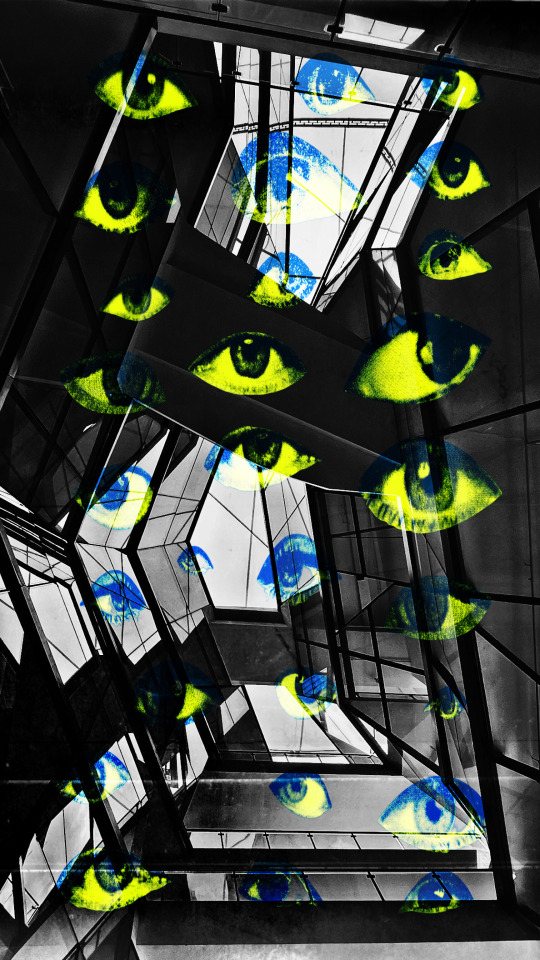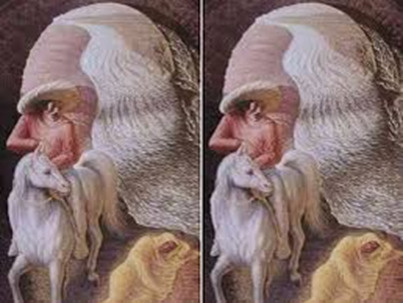Text
Summary
In my personal experience, the World of Ideas and Imagination (WOII) module has been extremely beneficial in shaping me as a designer. I realized that it has been one of the most beneficial courses I have taken in my academic journey. These are the reasons why this module is beneficial to me.
Firstly, the WOII module helped me expand my knowledge and understanding of various fields such as philosophy, art, literature, and history. Before taking this course, I had never considered the impact that these fields could have on my design work. However, learning about different concepts and ideas from these fields allowed me to develop a broader perspective and a more interdisciplinary approach to design. This has been particularly helpful in generating more innovative and creative design solutions, which I might not have thought of previously.
Secondly, the WOII module has been a significant source of inspiration for me. The module exposed me to a different form of art, literature, and culture, which inspired my imagination and creativity. Being able to explore and experience different perspectives has enabled me to develop new and unconventional ideas for my designs, which have helped me stand out as a designer.
Thirdly, the WOII module has also helped me enhance my critical thinking skills. By encouraging me to analyze and evaluate different ideas and perspectives, I was able to make more informed and thoughtful design decisions. Furthermore, the course challenged me to develop a deeper understanding of the social, cultural, and ethical implications of my work, which has been instrumental in creating designs that are not only aesthetically pleasing but also socially responsible.
As a result, my personal experience with the WOII module has helped me become a more well-rounded and reflective designer. The module has provided me with a broader perspective, more creative ideas, and stronger critical thinking skills, which have been invaluable in my academic and professional career.
word count: 317
0 notes
Text
Postmodernism
During today's class, I learned about postmodernism, which is a movement that began in the mid-20th century in arts, literature, philosophy, and other fields. The central idea of postmodernism is to challenge the traditional ideas and values and to question grand narratives. Postmodernism highlights the diversity of experiences and often blends high and low culture. It emphasizes the role of language and how it affects our understanding. As a movement, postmodernism has influenced several areas such as art, literature, politics, and popular culture, and has left an indelible mark on contemporary society.

Collage made by Minh and Sunyoung
In this lesson, we created a photo collage that is relevant to the principles of postmodernism. We were creating a collage that represents personal experiences related to mental health. One of our classmates, Minh, shared her struggles with a mental disorder that often leaves her feeling like she is constantly being watched. We explored the notion of glass buildings as a symbol of life being monitored, and cameras as a tool that makes individuals feel under pressure and self-conscious. Our collage served as a medium to communicate the unease and nervousness that stems from the persistent sensation of being observed through powerful visual metaphors.
Based on my studies, I have learned that postmodernism is a complex and diverse movement that offers many different ways in which it can positively impact our lives. One of its most notable advantages is its promotion of critical thinking. Postmodernism challenges the underlying assumptions and values of our culture, prompting us to question the norm and cultivate more thoughtful and introspective ways of thinking.
word count: 261
1 note
·
View note
Text
WEEK 10 POSTSTRUCTURALISM
Poststructuralism is a way of thinking and theorizing about the world that challenges traditional ideas about language, knowledge, and power. It suggests that meaning is not fixed or objective, but is created through language and discourse, which are shaped by social and historical contexts. Poststructuralists believe that power relations are inherent in language and discourse, and that language is not just a tool for communication, but also for the exercise of power. They critique traditional notions of identity, claiming that identity is not fixed, but is a product of discourse and power relations. Overall, poststructuralism emphasizes the importance of examining the underlying power relations and historical contexts that shape the production and interpretation of knowledge and discourse.
One artwork that can be interpreted through a poststructuralist lens is Marcel Duchamp's "Fountain" (1917). This artwork is a porcelain urinal that has been signed "R. Mutt" and submitted to an art exhibition. Duchamp's "readymade" challenges traditional notions of art, beauty, and authorship. Through the act of signing and submitting the urinal as a work of art, Duchamp highlights the power of language and discourse in shaping our understanding of what is art and who is an artist. He also critiques the power structures that shape the art world, such as the authority of art institutions and the exclusivity of high culture. Overall, "Fountain" exemplifies the poststructuralist notion that meaning is not fixed, but is constructed through language, discourse, and power relations.
Based on what I have learned, poststructuralism is a theoretical approach that emphasizes the role of language, discourse, and power relations in shaping meaning and understanding. In my understanding, poststructuralists argue that meaning is not fixed or objective, but is constructed through language and discourse, and is shaped by power relations that operate at the level of institutions, culture, and society. This approach challenges traditional notions of authorship, identity, and truth, and encourages a critical examination of the ways in which language and power operate in social and cultural contexts. As an example of a work of art that can be interpreted through a poststructuralist lens, Marcel Duchamp's "Fountain" challenges traditional notions of art and authorship, and highlights the power of language and discourse in shaping our understanding of what is art and who is an artist.
Source : 'Fountain', Marcel Duchamp, 1917, replica 1964 | Tate
word count: 386
1 note
·
View note
Text
WEEK 9 Cultural Materialism
Today in class, we learned about cultural materialism, which is a theoretical approach that emphasizes the impact of material or economic conditions on culture. In essence, cultural materialism suggests that culture is not just a product of abstract ideas or values, but is heavily influenced by the practical and material conditions of society, including factors like the production and distribution of resources.
In the lesson, we discovered that cultural materialists believe that a society's economic situation largely determines its culture, including its values, beliefs, and practices. For instance, a society's access to resources can significantly shape its values and beliefs. We also learned that cultural materialism has been applied to analyze various aspects of culture, such as literature, art, and consumer culture.
However, it is essential to note that this approach has been criticized for being reductionist, as it tends to overlook other factors that may also affect culture, including politics, ideology, and individual agency. Nevertheless, cultural materialism provides a useful way of understanding how material or economic conditions influence culture and can provide valuable insights into how societies function.
During our class on cultural materialism, we learned about various activities that can be examined through this theoretical approach. One example we explored was the EZ Link card, which is a smart card that we use in our daily lives for payment and access to services. By analyzing the EZ Link card through a cultural materialist lens, we can gain a better understanding of how this technology reflects and is influenced by broader economic and material conditions that shape our society and culture. This is just one of the many examples we studied in our exploration of cultural materialism, which is a useful tool for understanding the complex interplay between culture, economics, and society.
word count: 294
0 notes
Text
SEMIOTICS
WEEK 3 SEMIOTICS
Personally, I can understand that semiotics is the study of signs and symbols and how they convey meaning. It is fascinating to learn that signs can be anything that stands for something else, such as words, images, gestures, or sounds, and that symbols are signs that have a shared cultural meaning.
I can appreciate that semiotics is concerned with how signs and symbols are used to communicate ideas, beliefs, and values. It is intriguing to explore how people interpret signs and symbols differently based on their cultural background and personal experiences, which makes me wonder how my own interpretation might differ from someone else's.
It is amazing to realize that cultural and personal factors can shape the meaning of signs and symbols. Semiotics helps me understand how I make sense of the world around me through signs and symbols, and how the meanings can vary based on my own cultural and personal background.

To provide an example of semiotics, I have brought along an advertisement for Coca-Cola Zero. Coke Zero ads are full of symbols that are used to convey specific messages and appeal to the target audience's values and aspirations. The ads use a range of semiotic tools to create meaning, including black and white color schemes, intense visuals, and edgy music, to symbolize the product's bold and edgy taste. Additionally, prominently displaying the number zero on the product packaging or in the ad visuals is a semiotic strategy to represent the product's zero-calorie content and its healthier alternative to other sugary beverages. The ads may also use semiotic techniques to symbolize youthfulness, energy, and freedom through imagery of young people having fun, engaging in adventurous activities, and enjoying life to the fullest while drinking Coke Zero. Overall, these semiotic symbols are meticulously crafted to create a positive association with the brand and encourage consumers to choose Coke Zero as their preferred beverage, appealing to their values and aspirations.
Word count: 320
References:
Coke Zero™ Campaign Tells Guys "It's Not Your Fault": Press Release
0 notes
Text
PHENOMENOLOGY
WEEK 1 PHENOMENOLOGY
During today's session, we delved into the fascinating world of phenomenology. At its core, phenomenology is the study of the "living experience" and the phenomena that arise from our encounters with the world around us. Through the lens of phenomenology, we can explore the various dimensions of human experience and gain a deeper understanding of the intricate interplay between our minds and the world we inhabit. To supplement our discussion, I presented a research study on the ideas of the renowned philosopher, Descartes. In his works, Descartes emphasized that the external reality is a separate and distinct entity that can only be comprehended through the cognitive process of reasoning. While his ideas certainly carry weight, my personal view of phenomenology is that it represents a co-creation of reality and consciousness. When we apply phenomenology to appreciating a work of art, for instance, it allows us to see and experience it from different perspectives, and gain insights into the various experiences and emotions it can evoke in us. In this way, phenomenology offers a unique approach to understanding the world around us and the experiences we have within it.
[Artworks that showing phenomenology]


What particularly caught my attention was the way that these artworks seemed to offer a wealth of different images, each of which could be seen depending on one's perspective. Take the first painting, for example. At first glance, it appears to simply depict a serene natural landscape, with rolling hills and lush greenery. Yet, upon closer inspection, one can see the faint image of a man, perhaps lost in thought, standing amidst the scenery. Similarly, the second painting, which features a man with a beard, offers a wealth of hidden details that only become apparent upon closer inspection. Indeed, if one looks a little further, it is possible to discern a man riding a horse in the background, gazing intently at a woman who is lying down. It is this incredible interplay between different elements within the painting that made me particularly intrigued. I was struck by the fact that, depending on one's perspective, it is possible to see vastly different images within these works of art. It made me appreciate the power of art to evoke different thoughts and emotions in different people, and to inspire endless interpretation and discussion.
Word count: 379
Image references:
Teoria Gestalt. "미술치료에 대한 오해." Brunch.Co.Kr, 10 Oct. 2020, brunch.co.kr/@moon124/3.
1 note
·
View note